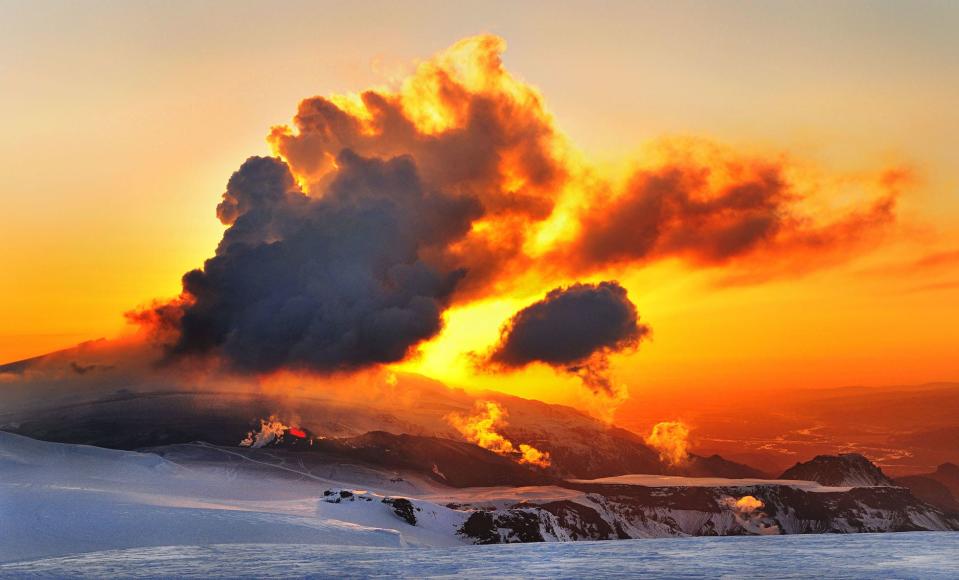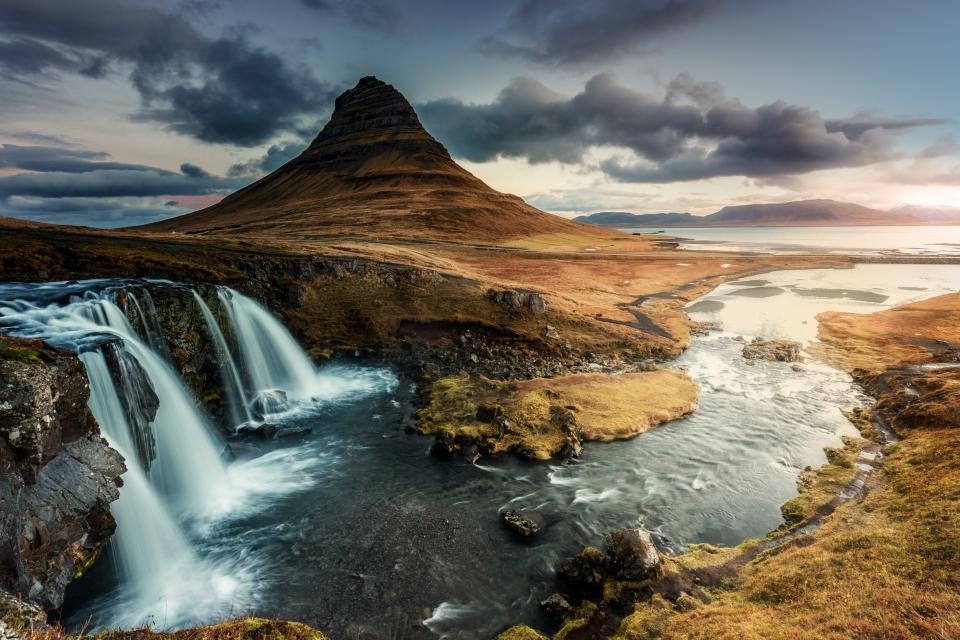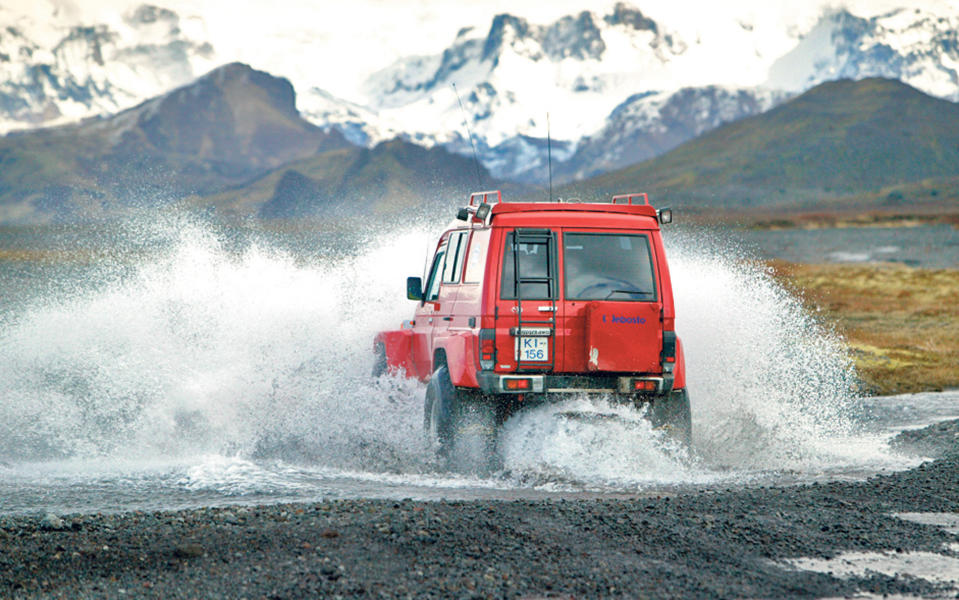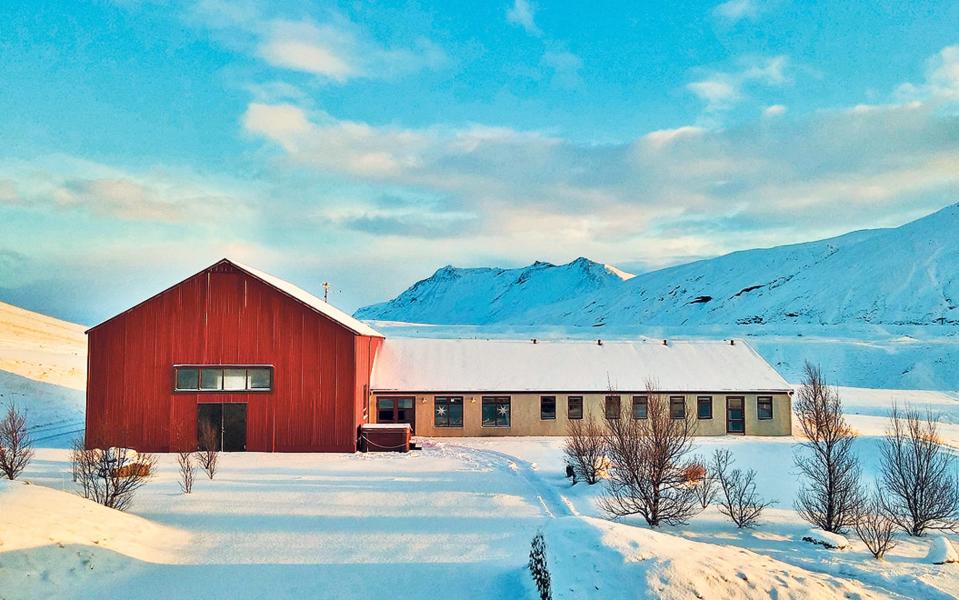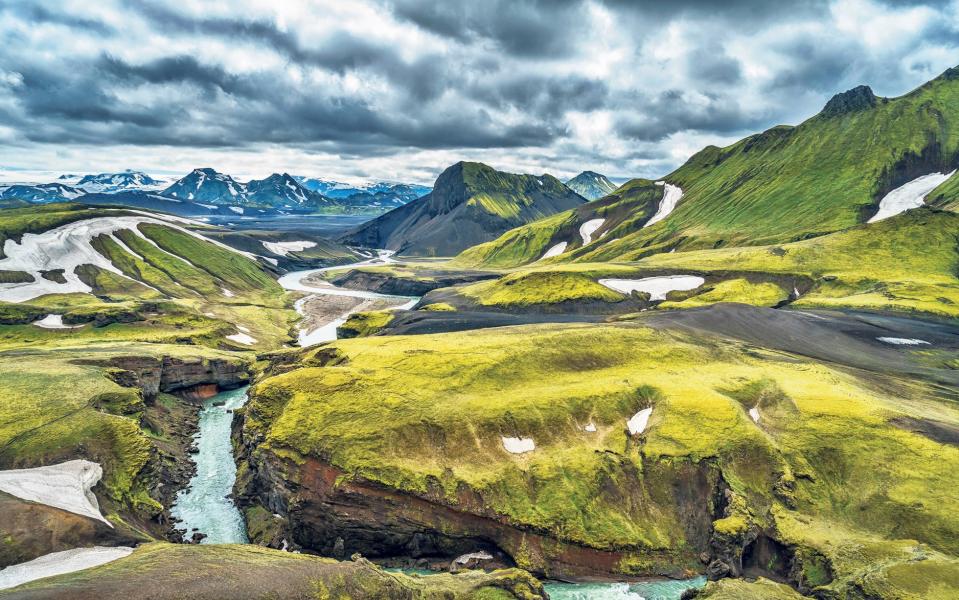The oddball country where camping under a volcano is absolutely fine
'You’ll never see an Icelander using an umbrella,” chuckled Arsæll (“Saeli”) Hauksson, my bearded bear of a guide dressed in his thick hand-knitted sweater. “Out here, the rain falls sideways.” Indeed, nothing in Iceland follows the rule book, from the fickle weather to the vowel-tastic language that sounds like a fairy wrapping her tongue around a bonbon. Its people are especially averse to doing as they are told. Untamed as the mountains around them and descended from Vikings, each man is still his own king. In Icelandic there are no words for “please” and “thanks very much”.
“We’re basically anarchists,” said Saeli. “We don’t follow anyone’s rules.” Distrust of leadership has only grown since the 2008 banking crisis, as shown by the voting in of comedian Jon Gnarr, who served as mayor of Reykjavik from 2010 to 2014, and the rise of the Pirate political party.
Out here oddball is OK, so it seemed perfectly normal that I was going to camp in the shadow of a volcano, one of the highlights of a five-night tour called Iceland Wilderness by SuperJeep. The Volcano Huts sit in southern Iceland’s Husadalur Valley beneath Eyjafjallajokull – nicknamed Eyo – which famously erupted in 2010 and disrupted air travel across western and northern Europe. “That was nothing,” Saeli boasted. “In 1918, Katla [another volcano] erupted and released more water than the Amazon River – the ice covering the caldera can be over 700m thick.”
One night, we were all sat in here telling ghost stories when there was a knock at the door. We opened it to find a French guy shivering in the darkness.
Saeli the guide
I peered up at the raw peaks, nervously. “Know why most volcanoes have female names? Because they’re temperamental and take your house!” said Saeli with a good-natured wink.
My guided tour, booked through Discover the World, is for anywhere from one to 12 passengers depending on the week of departure – and on this occasion it was just me and trusty Saeli. He had picked me up in a Nissan Patrol 4x4 SuperJeep after I’d spent the night in a converted cowshed-turned-boutique b&b called Hotel Selid. The brute of a car was fitted with a V8 Corvette engine and tyres as tall as my head. “Sometimes the weather is so bad we drive using only this,” Saeli said, pointing to a marine-grade GPS unit posted on the dashboard. “It’s like flying blind.”
I flashed him an unconvincing grin of bravado as I hauled myself into the passenger seat. But up there I felt like a superhero. “We’ll just follow the road,” Saeli said. “Which road?” I laughed. “Nature’s road!” he replied, as we rolled easily over rocks and riverbeds, the rushing water skimming the doors as we splashed through a succession of streams.
Eyjafjallajokull and the other two surrounding glaciers funnel the aurora borealis into this valley, usually making it a great place to see the Northern Lights. On this night, however, clouds veiled the stars, so the only light was the yellow twinkle from the cabins up ahead.
We pulled up outside and I leapt from the vehicle, landing on muddy earth still slushy from earlier rain. Slamming the doors shut, we were plunged into darkness. Only the ghostly glow of snow on the caldera of Eyjafjallajokull could be seen.
I trekked towards the main cabin and was hit by a wave of heat as I swung open the door. Inside music was playing softly, but there was no one in sight. Long wooden tables and chairs sat beneath old ice skates and skis hanging on the timber walls, while a cauldron of soup steamed away on the sideboard.
Mapped: the countries with the most volcanoes
A young man sporting spectacles and tufts of hair on his chin walked into the room. He struggled, at first, to say hello. The days are quiet around here. Tomas Tonon is from Argentina and this was going to be his first winter manning the cabins with his four colleagues. Come December, more than 3ft of snow will blanket the ground, the mercury will fall to -10C and days will often elapse between guests. The nearest neighbour is 20 miles away, and such isolation can wreak havoc on weak minds.
“I once overheard two wardens, posted at remote camps, playing chess over the radio because they hadn’t seen hikers for three days,” said Saeli, while we tucked into a plate of chicken and roast potatoes. “Iceland is built for adventure, but some people overestimate their abilities. One night, we were all sat in here telling ghost stories when there was a knock at the door. We opened it to find a French guy shivering in the darkness. He’d forded the river on foot.”
Later, I clambered into my mountain-hut bunk bed and listened to the rain and wind clawing at the roof. It was considerably more comfortable than camping, but nature wanted to remind me it was still camped outside, waiting.
The hibernating sun didn’t rise until 9am, but in the early haze I glimpsed three ghosts slinking between the huts. “Arctic foxes,” said Saeli, following my line of sight. “They were the only animal here when Iceland was settled.” No bigger than cats, they hung around the kitchen waiting for scraps. I scampered closer to take a photograph and their burning amber eyes warned me not to tread closer.
We drove deeper into Thorsmork Nature Reserve and found one of Saeli’s favourite gorges. Vertical walls, carpeted with spongy moss, loomed over us. I noticed Saeli place his hand tenderly on a rock as we entered, but I said nothing. We hopped over black boulders and freezing streams, inching closer towards the narrowing head. Slender waterfalls occasionally spilt over the top of the cliff ledges, like ice water being poured into a deep cup. These raw scenes are the landscapes that inspired JRR Tolkien’s The Lord of the Rings. “In his diaries he talks of visiting here and if anywhere inspired him for the Gates of Mordor, this is it!” said Saeli, gazing up at the sheer stone.
“Can you see the faces in the rocks?” I followed his pointed finger and, sure enough, could pick out a heavy brow and a sharply pointed nose. “They’re trolls – if they get caught by the sun they turn to stone.”
“Is that why you touched the rock when we entered the gorge?’ I asked. Saeli blushed. “It was just to declare we bring no evil intent. You see, Icelanders will never fully admit we believe in elves and trolls, but the stories have been told to us since childhood, so they’re in deep. And why not believe? It’s all about respecting nature, really. You should be out here when the mist is moving – it looks like creatures running in the shadows. Then you’ll believe anything,” he grinned.
Up ahead I could hear the thrum of a waterfall. We ducked beneath a stone archway and clambered upwards over slick rocks until we were standing in the spray of the rushing torrent – a secret primordial spot lit by rainbows. “Even with the increase in tourism, you can spend the whole day out here without meeting anyone else,” Saeli shouted above the roar of the downpour.
29 reasons why Iceland is incredible
In the afternoon, we attempted to manoeuvre up the slopes of Eyjafjallajokull. Crunching over the lumps of lava, we made it as far as the snow-dappled plateau of Trollamiri (Troll Swamp) before the cloud swept in, blocking all the views. So we turned tail and rumbled back down, the wind clumping the snow and throwing it at the windscreen like oversized popcorn.
Saeli decided, instead, to drop me off on the far side of the Valahnukur Mountains, to hike back over to the Volcano Huts independently. I watched the SuperJeep rumble back across the wide floodplain and out of sight, then turned to face the summit.
It was just Mother Nature and me now. The ground was hardened and bejewelled with frost as I followed the narrow trail past clumps of green moss and trees stripped naked by the wind.
At the crest, a staggering panorama unfolded. Shafts of sunlight had pierced the clouds, spotlighting a ring of snow-dusted calderas cut through by silvery skeins of rivers. In the distance, I could see the ridges of a glacier creaking its way down the mountain – each judder sounding like an aircraft flying overhead.
Up here, not a speck of humanity could be seen and the feeling of freedom was as keen as the fresh air that bit my wind-cherried nose. Suddenly, I got a heady dose of what it must be like to be your own king.
On the way down, I crossed paths with a couple from Holland. “Looks like it might rain,” frowned the man. I noticed an umbrella strapped to the side of his small rucksack. “You won’t be needing that,” I smiled. “The rain falls sideways here.” Maybe there’s a little bit of Viking in all of us.

 Yahoo News
Yahoo News 